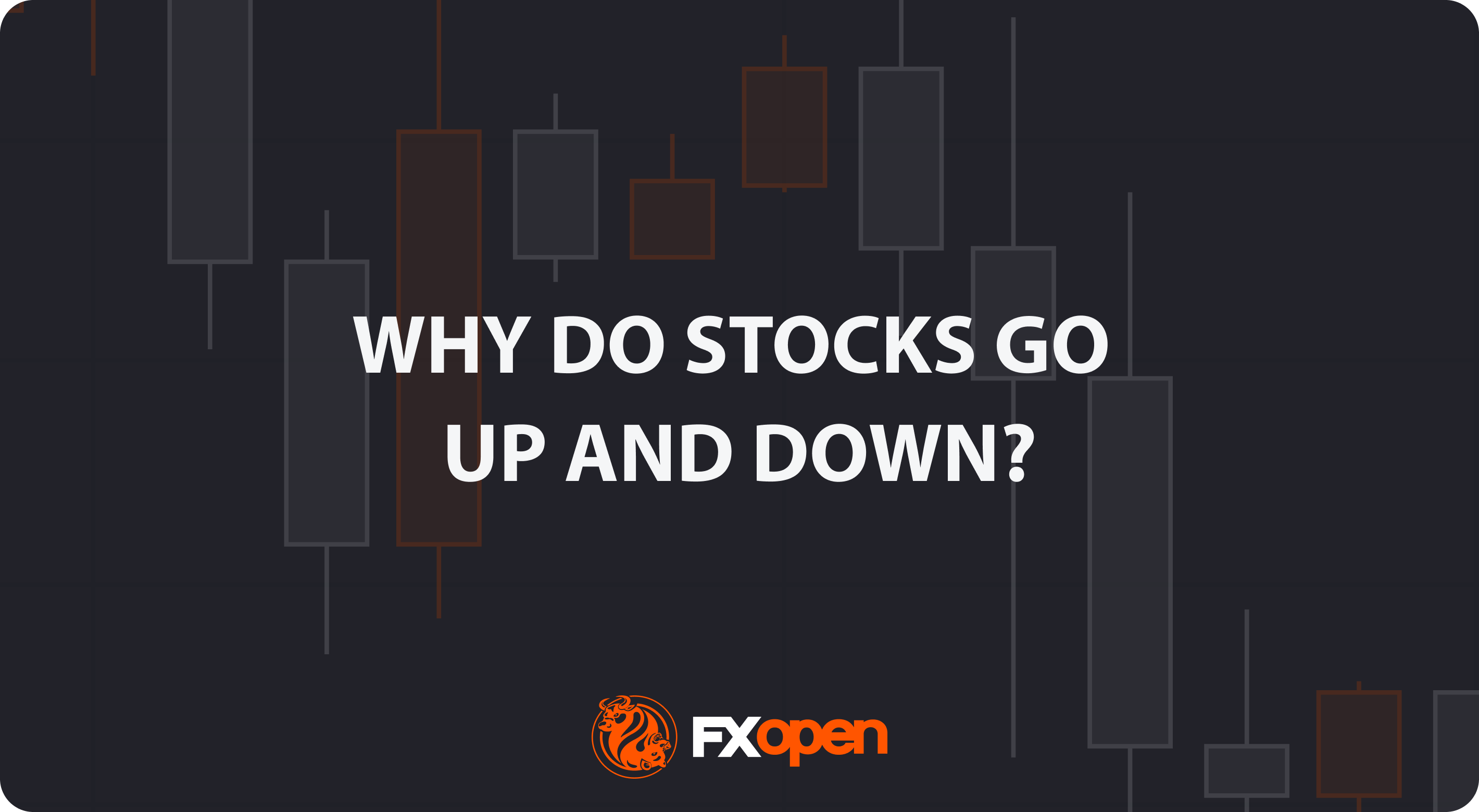FXOpen

The terms "risk-on" and "risk-off" are frequently used to refer to the sentiment of traders and investors in financial markets. But what do “risk-on” and “risk-off” mean? What do they tell you about market activity?
In this FXOpen article, we answer the question, ‘what is “risk-on” and “risk-off” sentiment?’ We also explain how understanding this concept can inform your trading strategies.
What Is Risk-On and Risk-Off Sentiment?
Risk is the potential that a trade will not generate the expected returns or you will even lose money. Any trade inherently carries risk. The amount of risk depends on the individual asset. For example, cryptocurrencies are associated with greater risk than stocks, while stocks tend to be riskier than treasury bonds.
What does risk-on mean? “Risk-on” and “risk-off” are relative terms that refer to changes in the sentiment, or attitude, of investors to the financial markets in response to changes in economic conditions and the impact this has on their activity.
Risk-On vs Risk-Off Approaches to Market Sentiment
When participants are optimistic about the performance of the market, risk-on sentiment tends to prevail. Traders become more confident to take on more risk in their positions, as they believe that the possibility of making higher returns outweighs the risk of underperformance. This increases the demand for higher-risk assets and contributes to higher prices.
When participants are pessimistic about the market outlook, risk-off sentiment can take hold. Traders will typically become more cautious and reduce their exposure to higher-risk assets to avoid losses by opening risk-off trades. This shift in demand can weigh on prices for high-risk assets and increase the value of low-risk assets. The switch to low-risk asset classes is known as a “flight to safety”.
As sentiment constantly changes, “risk off vs risk on” describes temporary market activity.
What Determines Risk-On and Risk-Off Sentiment?
Macroeconomic statistics, corporate financial results, and government and central bank policies are among the factors that can affect risk sentiment.
Risk-on sentiment often forms during periods when companies report higher earnings, international economies are growing, governments and central banks adopt stimulative policies, and traders speculate that asset prices will rise. Increasing stock market values are among the best risk-on/risk-off indicators. In contrast, falling corporate profits, slowing economic growth, tightening monetary policy and a flight to safe-haven assets indicate a risk-off environment.
An example of a risk-on environment is the stock market recovery in 2021 as COVID-19 restrictions ended, governments provided stimuli to companies and workers, and traders expected economies to expand. Traders focused on speculative assets such as high-growth technology stocks as the pandemic accelerated digital transformation.
Sentiment shifted to a risk-off environment in February 2022 with the start of the conflict between Russia and Ukraine, as traders became concerned about the impact of geopolitical instability on global economic activity. Stocks and cryptocurrencies were sold off as traders bought safe-haven assets like the US dollar.
What Are Typical "Risk-On" Assets?
Risk-on assets are financial assets that typically display high price volatility, as traders are more confident to buy and sell them when they are positive in their market outlook and expect higher returns than they’d get from low-risk assets.
- Stocks. Equities, particularly those with volatile prices, are more attractive in a risk-on environment. High-growth, emerging-market and penny stocks tend to carry increased risk compared to developed-market, large-cap, and more stable stocks.
- Commodities. Prices for commodities such as oil, industrial metals, and agricultural commodities are highly volatile and influenced by weather events, geopolitical factors and economic conditions, so they tend to be riskier than other assets.
- High-yield bonds. Bonds that provide a high yield are riskier than investment-grade corporate and sovereign bonds, as there is a higher risk that their issuers could default during times of economic instability.
- Real estate. As well as the risk related to physical property, investing in real estate has risks associated with interest rates, economic cycles, government policies, and regulations.
- Currencies. Foreign exchange (forex) markets are highly volatile, carrying greater risk than some other assets. Certain currencies tend to perform well when risk-on sentiment takes hold.
- Cryptocurrencies. Digital coins and non-fungible tokens (NFTs) are high-risk/reward assets which have the potential to generate outsized returns when sentiment is bullish but can also fall sharply when markets turn bearish. However, if you trade crypto CFDs*, you can take advantage of falling prices too.
What Are Typical "Risk Off" Assets?
A risk-off asset is considered to be less volatile than other assets and becomes more attractive during times of market uncertainty.
- Government bonds. Debt issued by governments offers a lower return than assets such as stocks, real estate and currencies, but it is typically more stable and provides consistent returns.
- Treasuries. Treasury bonds are backed by the US government and are considered to be among the safest investments.
- Bank deposits. Banking products such as Certificates of Deposit (CDs) and mutual funds are stable assets offering guaranteed returns. CDs are bank deposits that pay interest, while money market funds invest in short-term debt securities such as treasury bills.
- US dollar. The US dollar is the global reserve currency and is a safe-haven asset, especially during major events such as geopolitical conflict, economic slowdowns and the COVID-19 pandemic.
- Precious metals. Gold, and to an extent silver, is a safe-haven asset that retains its value and is not correlated to other financial markets. Investors typically increase their gold holdings in a risk-off environment.
You can trade risk-on and risk-off assets, including stocks, forex, commodities, and cryptocurrencies* via CFDs on the TickTrader platform.
Summary
Risk-on sentiment refers to optimism during times of economic growth and rising company profits, when traders expect riskier assets such as high-growth stocks, currencies and cryptocurrencies to rise in value. Risk-off sentiment takes over when economic or geopolitical uncertainty rises, and traders reduce their exposure to high-risk assets to favour safe havens such as gold and US Treasury bonds.
Analysing risk-on and risk-off indicators can help you to form your trading strategy to maximise profits and avoid losses as market sentiment changes. If you are looking to trade different assets, you can open an FXOpen account to start trading.
*At FXOpen UK and FXOpen AU, Cryptocurrency CFDs are only available for trading by those clients categorised as Professional clients under FCA Rules and Professional clients under ASIC Rules, respectively. They are not available for trading by Retail clients.
This article represents the opinion of the Companies operating under the FXOpen brand only. It is not to be construed as an offer, solicitation, or recommendation with respect to products and services provided by the Companies operating under the FXOpen brand, nor is it to be considered financial advice.
Stay ahead of the market!
Subscribe now to our mailing list and receive the latest market news and insights delivered directly to your inbox.








